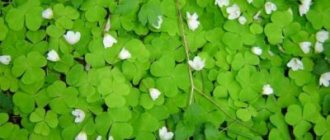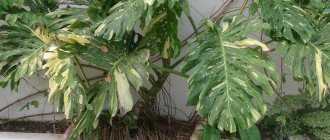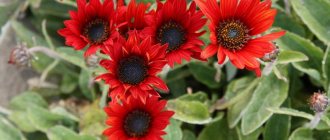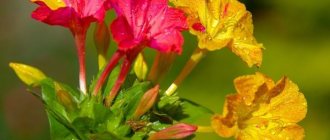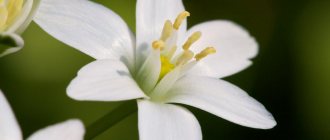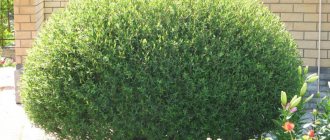Natural habitat of monstera - rainforests. It is absolutely possible to recreate such an environment at home.
Considering the type of plant, having knowledge of what conditions are important for the health of the monstera, you can grow a luxurious vine.
Monstera requires moisture, warmth and proper lighting.
The genus Monstera is widespread in the tropical forests of Central and South America. Biologists know about 50 species of this plant, belonging to the araceae family .
The bizarre shape of the leaves and impressive size served as the basis for the name of the plants - monstruosus (bizarre, monster).
At home, Monstera does not reach the size that is typical for it in its natural habitat. But this tall plant with large leaves needs a lot of free space. With proper care of the monstera, it can bloom - the flower is very similar to the calla lily flower. You are unlikely to see fruits in your home or office; this is only possible in natural conditions or a greenhouse.
What is monstera
In the early 18th century, there were rumors in Europe about large plants that were found in the rainforests and could kill people. Eyewitnesses said that after the attack of these flowers, all that was left of the living creature were bones hanging from the plant. These stories are partly true. Tourists mistook the plant's aerial roots for scary tentacles. Weaving downwards, they could grow through the human body. Because of such stories, the monster began to be called the Beast. But no one could say where the monstera lives. People were afraid to go into the jungle.
Bush in the wild
At first, scientists bred a new genus Philodendron from the plant, but in 1765 Monstera was isolated as a special type of crop. The first species of Monstera attractive were brought to England in 1754. Where Monstera grows, in South America, this species was accurately described only a century later by the Swedish botanist Frederik Liebman, who in 1849 published a monograph on the cultures of South America.
The plant has huge carved burdock leaves and strong stems.
There were legends about the plant's involvement in the deaths of travelers. Everything turned out to be much simpler. People who were lost in the jungle died under the huge Monstera bushes, and over the years the vines penetrated their bodies, and it looked terrible, as if the plant had killed a person. Therefore, now tourists do not arrange overnight accommodation or shelter in the bushes of this plant.
Edible fruits
First steps after purchase
Before purchasing a plant, make a thorough inspection of the leaves, stems and aerial roots. It is worth paying attention to the presence of suspicious spots, scratches, strange circles, dry edges of leaves. If something worries you, it is better to postpone the purchase of Monstera.
At home, it is advisable to check the soil moisture level and water if necessary. If Monstera is tall, you need to provide it with support so that the plant does not fall and break. During the period of adaptation to new conditions and microclimate, it is better to ensure peace.
Brief description of the monstera plant: botanical features
This flower belongs to the Araceae species. The name translated into Russian sounds like “monster”. This plant belongs to the variety of ever-flowering vines, which contains approximately 25 species. The monstera flower in nature looks like a very large and luxurious epiphytic plant that has a well-developed root system.
Monstera - home care, transplantation and reproduction
Aerial roots are formed at leaf nodes opposite the stems. The leaves are swamp green, shiny, oval or round, up to 50 cm in diameter, on long petioles - up to 35 cm, fresh leaves are whole, and only with age do slits appear on them. When the leaves first grow, they are rolled into a tube and have a pale green color.
Note! Monstera needs cuts on the leaves so that drops of water can easily penetrate through them into the root system.
The size of the stem in wild conditions can reach up to 25 m, and the leaves themselves can reach up to 85 cm. Young leaves are smooth, formed on long petioles. The large stem has many aerial roots, with the help of which the plant clings to everything that stands nearby. On the inflorescence there is an edible fruit, in a white cover.
Reality
In fact, the indoor plant secretes phytoncides that destroy pathogenic microorganisms. Today there are many varieties of monstera: compact, variegated, with patterns on the leaves. Most often, gardeners prefer the following types:
- Monstera delicacy. A classic vine with perforated dark green leaves. A few years after planting, it may begin to bear fruit.
- Monstera oblique. The plant is small in size, unlike other species, has leaves with oblong holes. They may have veins of different shades, which makes the appearance of the vine even more original.
- Monstera is questionable. The capricious indoor flower has variegated leaves, which is why it is often confused with scindapsus.
Is it possible to keep an exotic vine at home? Monstera? Of course yes. But you should know that it develops quickly, requires large areas and high humidity. Therefore, the plant is suitable for offices and hallways of large organizations.
Carefully! There is no need to place the potty in narrow corridors. The leaves are easily injured by touching; Due to drafts, they may turn yellow and fall off.
On what continent does monstera grow?
Forest violet in the wild
The plant's homeland is usually considered to be Central, South America and western India. But it’s difficult to say on which continent the monstera grows now. These plants were exported from almost everywhere to different countries.
Only grown leaf
Important! In the wild, the flower grows well in tropical forests where there is constant rain and the soil has high humidity. Therefore, in apartment conditions it is necessary to create this atmosphere through abundant watering.
Possible problems
If the conditions necessary for plant development are not met, problems may arise, including stunted growth, wilting and darkening of leaves.
Why do monstera leaves turn yellow, dry out and fall off?
Lack of nutrients or stagnant soil moisture can cause leaves to turn yellow. If there is a process of premature wilting, most likely it is due to a lack of light or infection with parasites. Leaves can dry out both due to the fault of pests and due to the heat in the room.
Why do monstera leaves turn black?
The leaf blades begin to turn black when overwatered, which results in stagnation of water in the pot. The roots, and then the entire plant, are affected by rot. To stop the process, urgent replacement of the soil, disinfection of the container and pruning of damaged roots will be required. After transplantation, the flower must be watered with a solution of phytosporin. They also treat damaged leaf plates.
Why isn't it growing?
Plant growth stops at temperatures below 19 degrees or lack of light. In addition, the flower may not have enough nutrients for growth due to poor soil or pest damage.
Monstera varieties
Ochidea in nature in the natural environment: where and how they grow
The three most common types of this plant are:
- Monstera deliciosa . At a young age, its leaves are smooth, heart-shaped or oval-shaped, and in an adult flower they grow up to 80 cm in diameter. At home, Monstera deliciosa does not grow more than 2 m, and in greenhouses - 10 m. If you care for it correctly, large fruits are formed, the length of which is 20 cm and the width is 15 cm. When the berry is ripe, you can taste it, depending on your taste. resembles a mixture of banana and pineapple. But the fruit must be cleaned before consumption.
- Borziga . Mainly grows in Mexico, the leaves are small, pinnate, up to 25 cm in diameter, suitable for indoor use. Compared to Delicatessen, it has very thin stems and grows quickly.
- Oblique . It is also called expilata or crescent. It grows mainly in the humid forests of Brazil and Guatemala. The leaves are round, long and narrow. If the air in the room is very dry, the leaves become small. The recommended breeding area is a damp greenhouse. It is here that the internodes become short and the leaves reach up to 30 cm in size.
Note! The rules for caring for different species are approximately the same: you need to create conditions that are as close to natural as possible.
Transfer
Young monsteras grow more intensively, they are replanted every year in the spring, 3-4 year olds are replanted every 2 years, older ones - every 3-4 years, but it is necessary to add fresh soil on top. Choose pots of large diameter. If the plant is already large, it is advisable to provide a support for it when replanting.
It is best to use an artificial trunk: when planting, a trunk (you can buy it at a flower shop or make it yourself) 70-100 cm high is installed in the center of the pot next to the stem. It is wrapped in sphagnum moss, fixing the moss with twine or wire. The moss is always kept moist, moistened with a solution of nutrients. In this case, the aerial roots that do not reach the ground receive additional moisture and nutrition and reach the soil surface faster. At the same time, this trunk serves as a good support for the plant.
Monstera soil and fertilizer.
The soil is prepared from peat, humus and sand (3:2:1), you can add 1 part of turf or leaf soil. The following mixture is also suitable: 1 part each of garden soil, humus, peat, sand. During the warm period, when Monstera grows intensively, it needs to be fed twice a month.
Monstera habitat in nature
Monstera's habitat is the southern part of America, or rather the tropics. At home, it is quite difficult to create such an atmosphere for a plant. But if you follow the rules of care and give the flower everything it needs, then it’s quite possible to grow it with your own hands, but it still won’t bloom.
How does a monstera behave in nature?
Aerial roots are constantly creeping from the plant, and the cut leaves are very large. The inflorescences look like thick oval fruits, the flower itself is bisexual.
Root system
Monstera needs adventitious roots to obtain additional minerals. Since this plant has high humidity in the wild, this will be a method of acclimatization to the environment. Under natural conditions, the plant grows up to 250 m.
Monstera leaves are very poisonous. They contain needle-like formations; if they come into contact with a person’s eyes or mucous membranes, they will cause severe irritation. This is one of the reasons why the plant is considered a monster and a killer.
There are many myths associated with this flower. The most common:
- Energetic vampire . According to this myth, the flower produces carbon dioxide at night, which can cause suffocation. It is believed that the plant, like a vampire, feeds on human energy, causing him to lose strength. But as ancient scientists say in the science of Feng Shui, these cultures love only negative energy. Monstera absorbs electromagnetic radiation, so it is often placed near household appliances.
- Poisonousness . According to some legends, the large monstera palm is a poisonous flower. In reality, a plant that blooms in gardens forms inflorescences on itself. They need to be cut off; they contain part of the toxic substance. Many people try them, but there is no need to do this, as you can feel a burning sensation in the mouth due to the large amount of potassium. But since the big monstera does not bloom at home, there is no need to be afraid.
Note! Myths about this tropical plant have not been proven by science, so it’s up to you to believe them or not.
Growth in the tropics
Reproduction
It is not difficult to propagate monstera. Like all aroids, this tropical vine is best propagated by apical cuttings, as well as cuttings from the middle of the stem. Each cutting must have an “eye” (bud). Root cuttings in water, sphagnum moss or sand. In order for the cutting to take root better and begin to grow faster, it is covered with a glass jar or plastic wrap. The air temperature should be 20-24 degrees, no less. Once a day, open the film to ventilate and moisten the substrate. The rooting substrate is washed coarse-grained river sand or a mixture of sand and peat in equal parts. Rooting occurs within 25-30 days.
Monstera is also propagated by air layering of shoots. To do this, the stem is covered with damp sphagnum moss and then wrapped in plastic film, secured on both sides with wire. After the roots form, this section of the stem is separated from the mother plant and planted in a separate pot.
Why does the monstera “cry”
There are many reasons why a monstera cries. Sometimes a plant cries when it doesn't have enough water, thereby indicating that it is time to water.
Also, when rain approaches, the monstera cries and drops of water appear on the edges of the leaves. If watering is abundant, the flower gets rid of excess liquid with the help of tears.
If you decide to grow this plant yourself, first you should find out on what continent Monstera grows. In indoor conditions, it is necessary to create as much as possible the climate to which it is accustomed. A large amount of moisture and sun is the main thing you need for proper cultivation.
In a home environment, a flower is more susceptible to various pests and diseases than in the wild. The most dangerous for it are chlorosis or spider mites.
Note! Many gardeners, no matter how much they love this plant, refuse to propagate and grow it in a home environment. Monstera, whose homeland is in the tropics, does not adapt well to other conditions. Such a large flower needs a lot of space so that it reaches its usual size and can develop freely.
And this is true, Monstera lives at home for about 5 years, this is with ideal care. In the wild, life reaches up to 30 years, this is a very big difference. Therefore, gardeners do not recommend keeping such plants at home, since they will not live long.
There are many legends and stories associated with the Monstera flower, many of which have even been confirmed. But no one will know the whole truth, because the events took place more than three centuries ago. However, one way or another, one cannot help but emphasize the beauty and luxury of this wild flower. But to truly understand what a monstera is, you need to see it at least once. This beauty cannot be forgotten.
Care and maintenance
Monstera as a houseplant does not cause much trouble for gardeners. She is unpretentious and at the same time looks very impressive and has an unusual exotic appearance. The general condition of the plant will depend on where Monstera grows in the house, how it is cared for, and whether maintenance recommendations are followed.
Choosing a place in the house
“Perforated friend” can rightfully be called an unpretentious flower. Nevertheless, you need to consciously approach the choice of location. This is primarily due to the fact that the plant does not like frequent movements from room to room and can react painfully to them, for example, stopping growth and losing its decorative appearance.
The “monster” also loves to grow and at home can easily reach a height of about 6 meters. Spacious rooms are suitable for it, where the flower will not be cramped.
Under natural conditions, Monstera can be found in shady places, but where there is always enough sunlight. Contact with direct scorching rays on the foliage can lead to burns, and large shading can lead to a slowdown or complete cessation of growth.
Incorrect lighting will not ruin the Monstera, but it will definitely worsen its decorative appearance and beauty. If the sun's energy is not enough, the leaf blade will lose its attractive juicy green hue.
It is best if the light is diffused. Such lighting can be provided by windows facing west or east. It is better to place the Monster not far from them on a stand. If the window frames are poorly insulated, then it is better to move the flower away. Drafts have a bad effect on Monstera's health. In winter, experienced gardeners recommend using additional lighting.
Temperature and humidity
With the arrival of the warm season, it is better to keep the room temperature in the range from +23 to +25 degrees Celsius. In the winter months, +18 degrees is sufficient. If the temperature drops below +15, the growth of Monstera will stop. At temperatures below +10 degrees, the plant will, at best, go into a dormant state and remain there until the temperature rises.
The flower responds positively to an increase in room temperature, if this occurs within reasonable limits. In a warm microclimate, the “monster” grows faster and feels several times better. The flow of fresh air also has a good effect on the condition of the flower. But you need to remember that Monstera does not tolerate drafts well. Any temperature changes in the room are just as destructive for her.
Monstera is native to tropical forests, so it thrives in humid microclimates. It should not be placed next to heating devices, as they intensively dry out the air. The flower will say “thank you” for regular spraying. To do this, it is recommended to use soft and warm water. Wiping the leaf blades with a damp sponge will also be effective.
Surprising is the fact that before the rain, droplets of water appear along the edges of the leaf blade of the plant. Flower growers called this phenomenon “crying Monstera.”
It is best to maintain a high or at least moderate level of humidity in the room. This will protect the green “pet” from drying out and turning yellow.
Watering and fertilizing
The flower needs abundant watering from spring to autumn. Flower growers advise doing this no more than once every 1-2 days. A signal that the plant needs watering is when the top layer of soil dries out. If it is cloudy outside and the room temperature is lower than recommended, then it is better to reduce the amount of moisture.
In winter, Monstera is watered even less often. Typically 4 times. But you still need to monitor the condition of the soil; it should not dry out completely.
Excess moisture, especially in winter, can lead to root rot. It is accompanied by the appearance of black spots on the leaf blades of the flower. The leaves fall and the plant loses its attractive decorative appearance. To avoid this, it is better to immediately remove excess moisture from the tray after watering. This will protect against unwanted stagnation of water. For irrigation, it is better to use settled water at room temperature.
Like any plant, Monstera will be happy to be fed. The best time for the event is from March to September. Fertilizers are applied 2 times a month. For this, not only universal fertilizers can be used, but also special ones for deciduous plants. It is better to use leaf humus as an organic fertilizer. It is applied in the form of mulch.
With the arrival of cold weather, the amount of fertilizer is reduced. They are paid once a month. As a rule, adult plants need feeding.
Pruning and replanting
Monstera needs regular rejuvenation. This is due to the fact that with age the flower gains height, and the leaves begin to fall off. In order for the plant to feel good and maintain an attractive appearance, its upper part is completely cut off, leaving no more than 35 cm. This is necessary so that young shoots have a greater chance of being born.
Flower growers often use the cut part for propagation. They simply lower it into the water and wait for the emerging roots to completely fill the bowl. Next they are transplanted into the ground.
Transplantation also plays an important role in the life of the “monster”. For the well-being of the flower, several rules are followed:
- Before the age of 4 years, Monstera is transplanted every year. Further, the interval increases to 1 time every 2-3 years.
- The root system of the plant requires a spacious pot. Therefore, it is better to increase the capacity with each transplant. This will have a beneficial effect on the growth rate and general well-being of the flower.
- Drainage should occupy at least a third of the volume of the pot.
When replanting, use either a mixture for palm trees or a soil mixture consisting of equal volumes:
- turf land;
- peat;
- humus soil;
- sand.
Plant pests
The flower can be attacked by unwanted neighbors who can cause great harm . The most common parasites include:
- Mealybugs. Their appearance is signaled by curved leaves and shoots, which after a while dry out and fall off.
- Scale insects. They can be identified by brown plaques. The leaves of the flower dry out and fall off.
- Thrips. You can find the parasite on the back of the plates. These are small insects that cause leaves to become covered with white spots.
- Spider mites. The signal will be the appearance of small cobwebs on the surface of the “monster” leaf plates. Due to the parasite, the leaves will begin to wither after a while.
If a pest is detected, it must be immediately removed from the flower with a damp cloth or sponge soaked in a soap solution. For final destruction, it is necessary to treat Monstera with an insecticide and observe for some time.
Monstera is a gorgeous plant that can delight its owner for a long time. It is perfect for both beginners and experienced gardeners. Following the recommendations will prolong the life of the exotic beauty and also preserve its decorative appearance.
